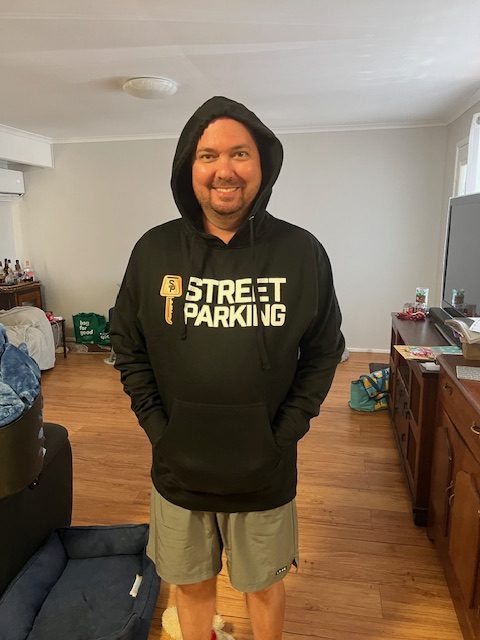Phil’s Journey
Cushing’s Disease
Phil before Cushing’s Disease
Phil with Cushing’s Disease
“It’s just stress.”
That’s what the first doctor said to me back in 2020 when I went in for a check-up after feeling unusually fatigued. I agreed, it made sense. Life was busy and stressful, and I took the referral for a blood test and went on my way.
At the time, I was your typical 38-year-old male – working full-time and trying to be halfway decent at CrossFit five days a week. Because of that, I knew my body well. So, when I was still feeling off almost two years later, I brought it up with my new GP. I talked about the persistent lack of energy, the noticeable drop in strength, and the general sense that something just wasn’t right. Over the previous year, I’d torn my calf and developed a DVT, events that felt disconnected at the time but would soon make sense in a bigger picture.
My GP ordered blood tests. A week later, she called to let me know my testosterone was low, low enough that I could be considered for TRT. But she also referred me to an Endocrinologist, just to rule out anything else.
That referral was the start of it all.
Soon after, my body seemed to spiral. I started bruising easily and took ages to heal. I experienced multiple DVTs, unexplained weight gain, swelling, extremely high blood pressure, stretch marks under my arms and on my stomach and intense fatigue. Even walking around the house barefoot hurt my feet so badly that I avoided it altogether.
While waiting for my Endocrinologist appointment, I had a bone density scan. The results shocked me – osteopenia. My hip joints were comparable to those of a 71-year-old. Not long after, I cracked three ribs simply from falling while carrying a bag of dog food, a fall that wouldn’t have fazed me a year earlier.
One evening, while googling my symptoms (as we all do), my wife turned to me and said, “I think you have Cushing’s disease.” She read through the list of symptoms, weight gain, fatigue, bruising, muscle weakness, mood changes. I checked off nearly every symptom.
When I finally saw the Endocrinologist, she confirmed it almost instantly. She hadn’t seen a case of Cushing’s in over ten years, and suddenly I was her third that year and her first male case. After more tests and scans, we found the culprit – a small tumour on my pituitary gland. My 24-hour urine cortisol levels came back at ten times the normal range. My body was in overdrive.
In April 2024, I met with a neurosurgeon, and surgery was scheduled for June 10. I spent seven days in hospital and then began the long process of recovery.
Now, nearly a year post-op, I’m doing well. My pituitary gland has “woken up” and is producing hormones again. I’ve weaned off all medications and feel pretty good most days.
Looking back, I’m grateful I acted. As men, we’re often told to tough it out, to push through discomfort and accept it as the new normal.
But that mindset can be dangerous. If something doesn’t feel right, talk to your doctor. It might be nothing, or it might just save your life.
Although my body has largely healed (apart from some lingering joint pain we’re still investigating), the mental toll has been harder to shake. I think about it every day. I worry it might come back.
The support of others going through similar experiences and my family has been invaluable. Connecting with people who understand whether online or through coffee catchups with the APF, has made a real difference. It’s something I’ll continue to be part of, even through recovery.



